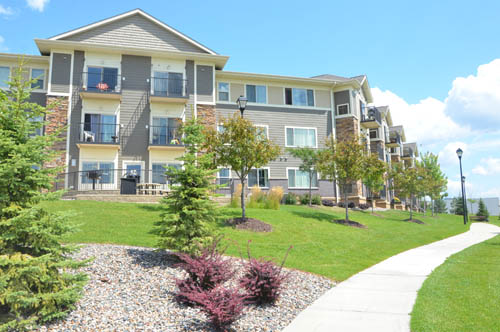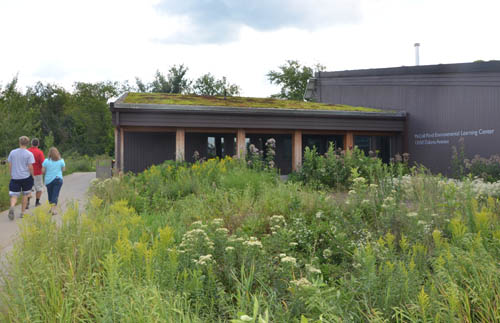Located on the Minnesota River bluff in northeastern Scott County, Savage is a city filled with suburban neighborhoods, natural features, and history.
SAVAGE COMMUNITY PROFILE
Location – Northeastern Scott County
Population – 30,285*
Households – 10,202*
Jobs – 7,650*
Top employers – Target, Fabcon Precast, Continental Machines, Silgen Container Corp., Waste Management Inc., Cargill
Notable features – Savage Fen Scientific and Natural Area; the Minnesota Valley National Wildlife Refuge
Regional Parks – Murphy-Hanrehan Regional Park Preserve
Major highways – East/west: County Rd. 42 and Hwy 101; North/south & east/west: Hwy. 13
Transit – Express service to downtown Minneapolis (Route 464), Burnsville/ Savage (Route 421), Savage/Burnsville/ Mall of America (Route 444)
*Metropolitan Council 2016 estimates
Originally settled by Scotch-Irish immigrants, the town was incorporated in 1892 as the village of Hamilton, named for a city in Ontario, Canada. When the race horse Dan Patch achieved national acclaim at the turn of the century, the townspeople renamed the community to honor its owner and trainer – Marion Savage.
The city of Savage still celebrates “Dan Patch Days,” with an annual community festival that includes a parade, Friday night bands, races, games, and other activities.
Highway, bridge openings lead to growth
In 1980, about 4,000 people lived in Savage, but two decades later, the city’s population swelled to 21,000. Today, Savage is home to more than 30,000 residents.
Helping to boost the city’s growth was construction of Hwy. 169 in northern Scott County and the Bloomington Ferry Bridge across the Minnesota River, linking Savage to urban areas to the north.
Porches: Maintaining a small-town feel
Even as it grows, the city retains a sense of community. “Our residents like our small-town feel – people still talk about it,” said Mayor Janet Williams, a life-long resident of Savage.
“For years, we’ve required sidewalks to be built on at least one side of the street in all our neighborhoods, except for small cul-de-sacs,” she said.
 “We require porches, too. It’s all about getting out and about so people can get to know each another. It’s also an important part of community safety.”
“We require porches, too. It’s all about getting out and about so people can get to know each another. It’s also an important part of community safety.”
Aiming to preserve open space
Savage is rich in natural features and amenities, she said, and the city hopes for more. “Our plan is to have about 30% of our land in parks, wetlands, and open space when we’re fully developed,” said Williams.
The city is well on its way. It boasts more than 20 city parks, and 400 acres of the Murphy-Hanrehan Regional Park Reserve inside its borders.
On the east side of the city is Credit River, which meanders north to the Minnesota River. “It was designated an impaired river by the Minnesota Pollution Control Agency 15 years ago. We took measures to clean it up so that the State was able to remove it from the impaired list,” Williams said.
On the city’s west side, Eagle Creek flows through the city to the Minnesota River. The source of the creek is Boiling Springs, a roiling, cold-water headwaters located on the border with Shakopee and held sacred by the Shakopee Mdewakanton Dakota.
 “Eagle Creek is designated a trout stream by the Department of Natural Resources, and it’s the only natural brown-trout stream in the metro area,” she said. ”We created a 100-foot protective buffer on either side of the stream to keep it healthy.” The wide swath of land – the Eagle Creek Corridor – is the first Aquatic Management Area created in the state.
“Eagle Creek is designated a trout stream by the Department of Natural Resources, and it’s the only natural brown-trout stream in the metro area,” she said. ”We created a 100-foot protective buffer on either side of the stream to keep it healthy.” The wide swath of land – the Eagle Creek Corridor – is the first Aquatic Management Area created in the state.
The Minnesota River forms the northern border of Savage within the Minnesota Valley National Wildlife Refuge. Inside the refuge is the Savage Fen Wetland Complex, covering more than 400 acres. The fen contains one of the rarest types of wetland plant communities in the country and is designated a Scientific and Natural Area by the state DNR.
Protecting fen leads to an alternative water supply
In fact, protecting the fen’s underlying aquifer was a factor that led the city to an alternative source for its primary water supply. Savage partnered with the city of Burnsville and Kraemer Mining and Materials to draw water from the company’s quarry.
“Since 2009, 75% of our water comes from there, not from the ground,” said Williams. “If something happens to that resource, we have a backup. But we’re proud of the fact that we’re using surface water instead of groundwater as our primary source.”
Port of Savage has global connections
Savage is a working port city on the Minnesota River for bulk cargo. Corn, grain, aggregates, fertilizer and salt pass through six ports operated by five companies, including Cargill and CHS Inc.
“Our stretch of Hwy. 13 between I-35W and Hwy. 169 has the most commercial traffic in the state because of the ports. Five percent of the grain in the U.S. is shipped from there. The recent widening of the Panama Canal has affected us. It gives you an idea of our global connections.”
The Ports of Savage are part of the city’s past as well as its present, she said. During WW II, Cargill built fuel tanker ships along the river to support military operations in the Pacific. In the same period, Savage was also the site of a U.S. Army military intelligence school.
Comprehensive plan update looks to diversify housing stock
With eyes toward the future, the city has started to work on a comprehensive plan to guide the community to the year 2040. “We’re working with other communities in Scott County and with the county government to develop one transportation plan. We’re also working together as we plan for housing,” she said.
Most of the housing in Savage is single-family, but the city is diversifying its mix. Three years ago, a new gated apartment development geared to millennials opened its doors. Savage also has workforce housing – townhouses and apartments – dispersed throughout the city.
“We received a Livable Communities grant from the Metro Council for one of our recently completed projects. It was the first in Scott County and the first for workforce housing. In our plan, we hope to address the housing needs of people who are homeless as well as people in crisis who are mentally ill.”
City and county officials held a local workshop with four groups of Savage residents to consider the topic areas of planning, parks, economics, and housing. “We’ll meet with them again on our plan, and as part of our process, we’ll reach out to our residents and to major owners of land properties in our community,” she said.
More information